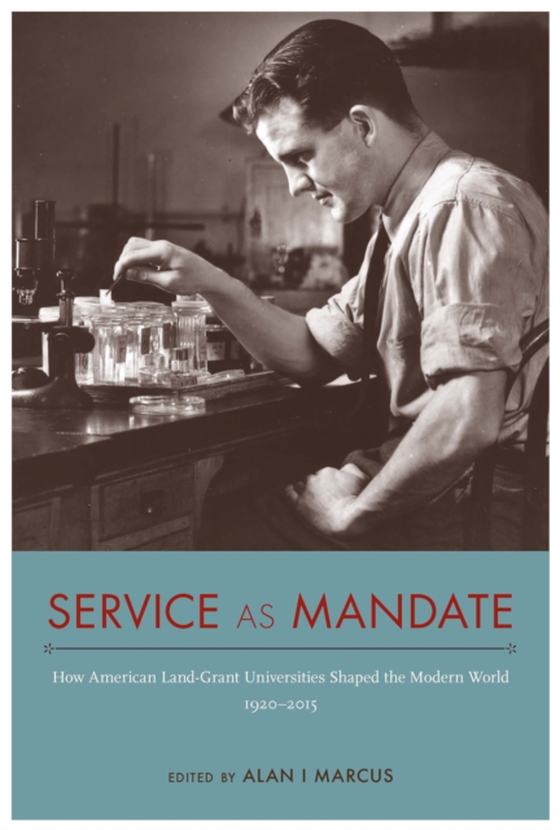
Service as Mandate e-bog
656,09 DKK
(inkl. moms 820,11 DKK)
Established by the Morrill Land-Grant College Act of 1862, America's land-grant universities have had far-reaching influences on the United States and the world. Service as Mandate, Alan I Marcus's second edited collection of insightful essays about land-grant universities, explores how these universities have adapted to meet the challenges of the past sixty-five years and how, having done so, ...
E-bog
656,09 DKK
Forlag
University Alabama Press
Udgivet
28 februar 2016
Længde
368 sider
Genrer
1KBB
Sprog
English
Format
epub
Beskyttelse
LCP
ISBN
9780817388973
Established by the Morrill Land-Grant College Act of 1862, America's land-grant universities have had far-reaching influences on the United States and the world. Service as Mandate, Alan I Marcus's second edited collection of insightful essays about land-grant universities, explores how these universities have adapted to meet the challenges of the past sixty-five years and how, having done so, they have helped to create the modern world. From their founding, land-grant schools have provided educational opportunities to millions, producing many of the nation's scientific, technical, and agricultural leaders and spawning countless technological and agricultural innovations. Nevertheless, their history has not always been smooth or without controversy or setbacks. These vital centers of learning and research have in fact been redefined and reconceptualized many times and today bear only a cursory resemblance to their original incarnations. The thirteen essays in this collection explore such themes as the emphasis on food science and home economics, the country life movement, the evolution of a public research system, the rise of aerospace engineering, the effects of the GI Bill, the teaching of military science, the sustainable agriculture movement, and the development of golf-turf science. Woven together, these expertly curated scenes, vignettes, and episodes powerfully illustrate these institutions' ability to flex and adapt to serve the educational needs of an ever-changing American citizenry. By dint of their mission to remedy social, economic, and technical problems; to improve standards of living; and to enhance the quality of life, land-grant universities are destined and intended to be agents of change-a role that finds them at times both celebrated and hotly contested, even vilified. A readable and fascinating exploration of land-grant universities, Service as Mandate offers a vital exploration of these dynamic institutions to educators, policy makers, students, and the wider communities that land-grant universities serve.
 Dansk
Dansk

